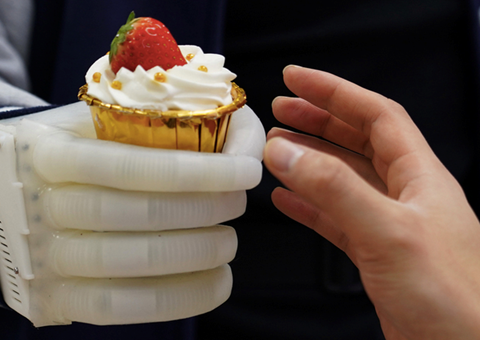
Inflatable robotic hand yields real-time tactile control
Although prosthetics technology has come a long way in recent years, there is finally a growing number of neuroprosthetics, bionic limbs, engineered to sense residual muscle signals and mimic the intended motion. Sounds great, right? Not completely. Neuroprosthetics can cost tens of thousands of dollars and are built around metal skeletons, with electrical motors that can be heavy and rigid. Now, however, MIT and Shanghai Jiao Tong University engineers have designed a soft, lightweight, and potentially low-cost neuroprosthetic hand.
Amputees who tested the artificial limb performed daily activities, such as zipping a suitcase, pouring a carton of juice, and petting a cat, just as well as — and in some cases better than —those with more rigid neuroprosthetics.
Designed with a system for tactile feedback, the hand restored some primitive sensation in a volunteer’s residual limb. The design is surprisingly durable, quickly recovering after being struck with a hammer and run over by a car.
The soft hand weighs only half a pound and its components total approximately $500. This is not yet a product, but it shows great promise. Zhao and his colleagues have published their work in Nature Biomedical Engineering. Co-authors include MIT postdoc Shaoting Lin, along with Guoying Gu, Xiangyang Zhu, and collaborators at Shanghai Jiao Tong University in China.
And yes, the pliable new design bears an uncanny resemblance to a certain inflatable robot in the animated film “Big Hero 6.”
Original Release: Eureka Alert
